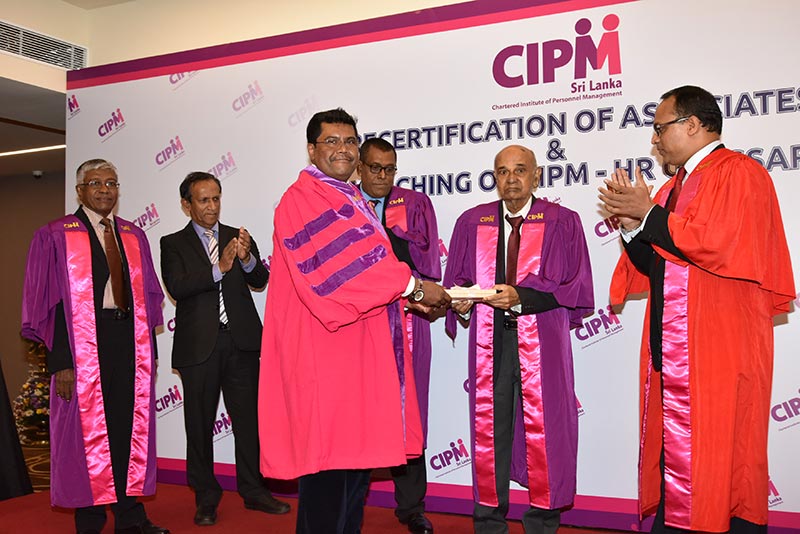
ICTA launches National IT-BPM Workforce Survey 2019

Information and Communication Technology Agency of Sri Lanka (ICTA) initiated a national workforce survey by launching “IT-BPM Workforce survey 2019” to gain a clear understanding of the extent and composition of IT and BPM workforce of Sri Lanka and to weigh that against the extent of the supply of skilled personnel. The ICT sector has shown the potential to uplift the national economy by attracting investment, earning foreign exchange, creating employment, increasing productivity and promoting innovation. With ICTA taking soul charge, this edition of survey has been organized for the fifth time keeping up with the focus of achieving 200,000 workforce by 2022. The overall survey highlights a vast improvement in ICT workforce and expansion of female ICT workforce which augurs well for the future of ICT sector. Over the years, ICTA, the apex government agency for Information and communication technology (ICT) has catered ICT needs of the government by implementing government’s policy and action plan in relation to ICT and functioned towards transforming Sri Lanka into a creative knowledge-based society.
The Workforce survey was launched on 6th August, 2019 at the Auditorium, Ministry of Digital Infrastructure and Information Technology, no 437, Galle road, Colombo 03with the participation of Digital Infrastructure and Information Technology Minister Hon. Ajith P. Perera, the Chief Guest, addressed the gathering alongside Prof. Rohan Samarajiva, Chairman of ICTA.
The survey which covers ICT Companies, BPM companies, Non-ICT companies, Government Organisations, Training institutions focuses on gaining insight into the strength of the workforce, gender composition, demand-supply gap, skill gap and the overall supply of the ICT workforce in Sri Lanka. According to the survey, the overall strength of the workforce has grown from 82,854 in 2014 to 124,873 in 2018 which amounts to a growth of 50.7% and is projected to leap further to 146,089 in 2019. The overall composition of the female workforce has improved from 21% in 2010, 29.7% in 2013 to 34% in 2018. The report reflects a relatively young workforce with 93% of ICT workers below 45 years and 80% of the workforce is calculated to be of less than 8 years of experience. Apart from that, ICT companies account for 92% of employees involved in emerging technologies which is a great leap in the ICT sector. Moreover, 64.2% of the ICT workforce are Bachelor’s degree holders out of which 69% are males and 30.3% are females and females reach the highest share of 35% in case of PG Diploma level which advocate for the quality and education of the ICT workforce.
“The IT-BPM workforce survey will bring about a drastic change in ICT and BPM sectors to identify and tackle issues to be addressed complementing gender equality, ensuring suitable personnel to fill in vacant positions and strengthening ICT sector. Apart from that, such surveys are a prerequisite in moving forward to build a substantial workforce’’, noted Hon Minister, Ajith P. Perera.
The reports of Central Bank of Ceylon (CBSL) reveal that earnings from the export of telecommunications, computer and information services have increased up to US$ 995 million in 2018. Of the total earnings in 2018, US$ 848 million (85%) was earned jointly by ICT and BPM companies while telecommunications contributed to US$ 147 million (15%). Hence, the ICT sector is vastly growing to be the mainstay of Sri Lanka’s economy and holds the capacity to usher in a technology-based future with latest innovations like Artificial Intelligence (AI), Internet of things (IoT), Virtual reality (VR), Augmented reality (AR) and so on.
It is reported that the demand-supply gap is widening and of the total demand of graduates, 70.2% is demanded by ICT companies. This has been identified as the major threat moving forward and stakeholders have a huge role to play in coping up with demand-supply gap to come into terms with a stable demand- supply by ensuring the quality of ICT workers, enhancing the skills of non-graduates, widening ICT education opportunities.
Apart from that, ICT workforce has gradually improved and new avenues have been opened up for ICT graduates with the rise of ICT industries. The workforce survey has boosted investors, policy makers, employers, organizations and students in ample ways from decision making to planning, recruiting, designing courses and so on. Overall, the survey has been instrumental in finding strengths and weaknesses of the ICT sector and will continue to be a pillar for its future success through a realistic picture of the demand-supply gap, skill gap of IT human resources. The survey will guide the universities and institutes to further their offerings, students to choose a rewarding career with future employment prospects, investors to decide on vital investment plans, policy makers to propose new policies and planning and maintaining the human resources. In conclusion, the ICT industry associations and professional bodies strived to make the survey a success and their collective effort is honored and appreciated.




